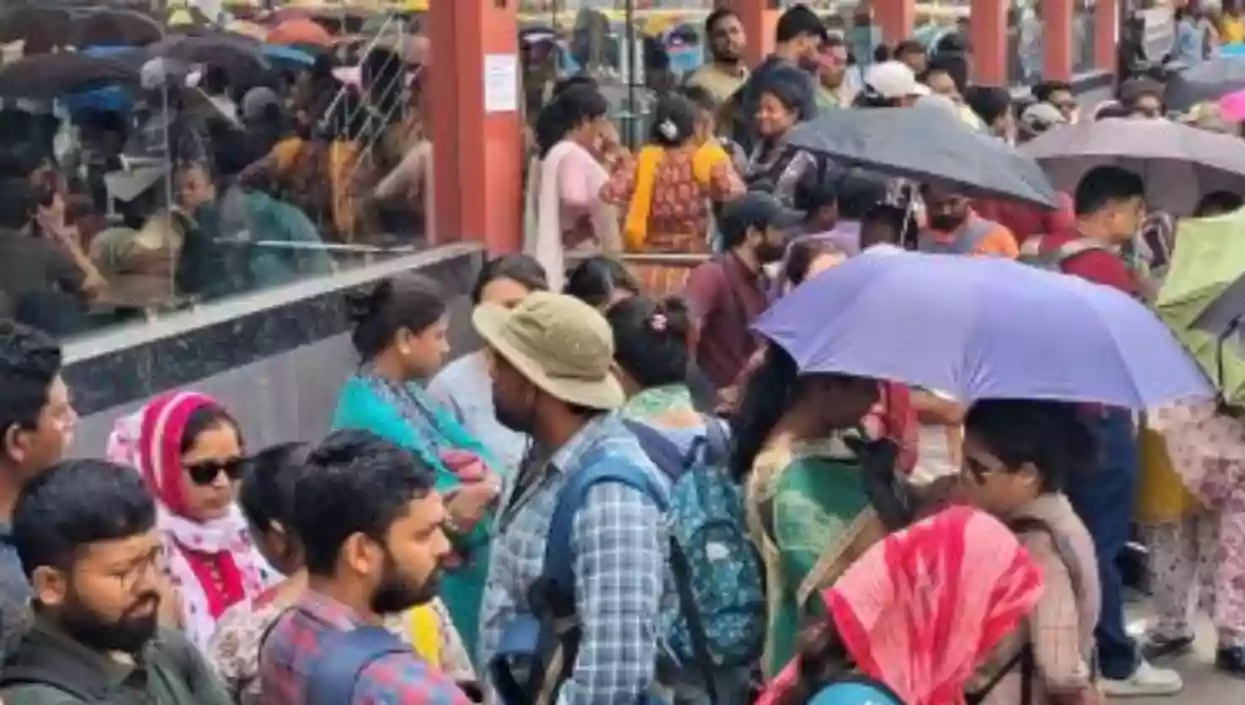.gif)
.gif)

Kolkata came to a standstill on Thursday morning as thousands of sacked teachers took to the streets, marching from Sealdah to Esplanade in a massive protest against the recent Supreme Court verdict canceling their appointments. The protest, led by those who lost their jobs following the West Bengal School Service Commission (WBSSC) scam verdict, caused severe traffic congestion in central Kolkata.
The rally began at Sealdah, one of the city’s busiest hubs, and moved steadily toward Esplanade. The sheer number of participants caught traffic authorities off guard, resulting in traffic snarls that paralyzed major connecting roads like AJC Bose Road, Lenin Sarani, and SN Banerjee Road. Despite a heavy police presence, vehicle flow between Sealdah and Esplanade was reduced to a crawl for several hours.
Commuters, particularly schoolchildren and office-goers, bore the brunt of the disruption. Many students traveling in pool cars were stranded in traffic or forced to take long detours. Passengers heading to Sealdah station to catch long-distance trains like the Rajdhani Express had to be escorted by police to ensure they reached on time.
The protest, which followed the Supreme Court’s decision to uphold the cancellation of over 25,000 teaching jobs, reflected the growing unrest among unemployed youth in the state. The teachers demanded immediate relief and questioned the government’s silence over their plight.
Even after the demonstration ended, traffic congestion continued till about 3 pm as hundreds of buses and mini-trucks remained parked along key city roads. Smaller rallies by citizen and political groups added to the chaos, making it one of the worst traffic days in recent weeks.
Authorities said they had anticipated crowd control needs at other protest spots but were unprepared for the volume of vehicles and people converging at Sealdah. The incident has raised fresh questions about Kolkata’s traffic management system during large-scale public demonstrations.